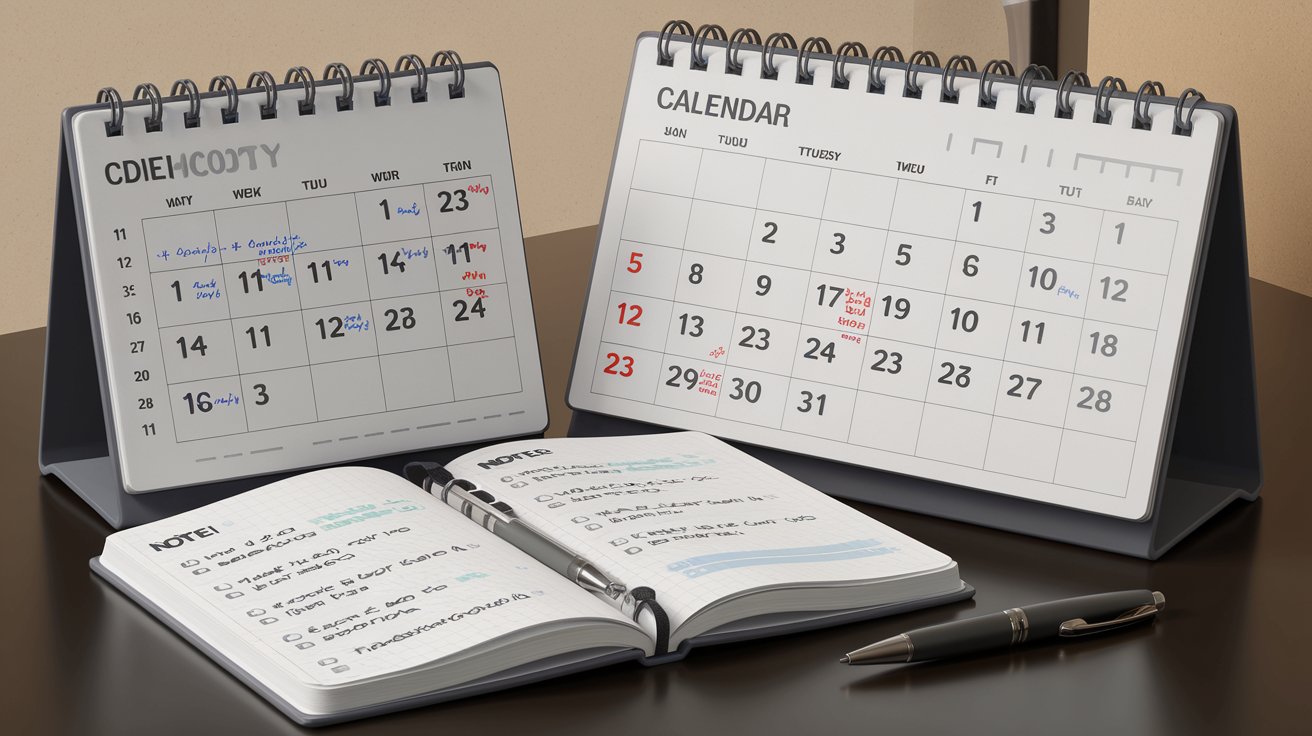The calendar and notes are two simple but powerful tools that play different roles in daily work and project management. The calendar allows us to organize our day and solve specific tactical tasks, while notes are a medium for planning and implementing broader strategic goals. Let's try to understand how exactly these tools complement each other and create an effective system for achieving goals.
The calendar: a tactical tool for everyday tasks
The calendar is a kind of "battle map" of the day. It records specific tasks and meetings, organizing time and resources for the coming hours or days. Tactical tasks are things that need to be done here and now, they do not always require long-term thinking, but need to be carried out precisely.
Examples of tactical tasks for the calendar:
- Meetings, calls, meetings and deadlines.
- Reminders for recurring tasks, such as weekly reports or reviews.
- Daily tasks that need to be devoted to a certain amount of time.
These tasks often have specific time frames and require discipline to stay productive. A well-structured calendar helps you quickly see where and when you can focus on work, when to do something important, and avoid overload.
Notes: A Strategic Tool for Ideas and Projects
Notes, on the other hand, provide freedom for creativity and analysis. They are used to keep records of strategic goals and long-term tasks. Notes are a place where you can put ideas for future projects, strategies, concepts that require reflection and development.
Examples of strategic tasks for notes:
- Project planning with clarification of goals, stages and necessary resources.
- Keeping lists of ideas, important thoughts and hypotheses for study.
- Recording current progress, analyzing the success of approaches and course correction.
Notes become a kind of database for your knowledge and thoughts. Unlike a calendar, notes do not always require completion, but rather welcome rough notes that can evolve over time.
How the calendar and notes work together
The calendar and notes complement each other perfectly, combining tactical and strategic approaches to time and task management. For example, when you create a new project, notes help you identify what tasks need to be completed and how they can be organized. These tasks can then be allocated to days on the calendar, creating a more structured action plan.
This interaction between notes and the calendar can be thought of in several stages:
1. Formulating ideas and goals: Starting with notes, you capture initial ideas, resources needed, and steps to achieve the goal. This is strategic planning.
2. Breaking into tasks: Based on ideas and goals, you break the project down into specific tasks and transfer them to the calendar, making them part of your daily schedule.
3. Control and adjust: Using the calendar, you track your progress, and notes help you analyze successes and possible improvements.
Example of use
- Imagine that you need to launch a new marketing project. You start with notes, where you describe the main idea of the project, goals, target audience, and proposed promotion methods. At this stage, notes help to record and organize the thought process. Then, when the strategy is clear, you move on to the calendar, where you assign time frames for each stage, such as collecting data, creating content, and launching an advertising campaign.
- The calendar will display specific tasks that need to be completed each day, such as writing an article or holding a meeting with the team. Notes, in turn, remain a space for further ideas and reflections on the project, where you can leave rough sketches, notes on competitive campaigns, and ideas for improvements.
Conclusion
- The calendar is our tool for time management, but notes are for knowledge management. A calendar helps us organize our day and stay on track in the short term. But notes allow us to make long-term plans, save ideas, analyze, and form a strategy.
- The calendar and notes are two poles in task management: the first supports tactical discipline, the second stimulates creativity and strategic thinking. Together, they create a system where daily actions are always connected to larger goals. So, instead of focusing only on urgent matters, you are constantly moving towards larger goals.
